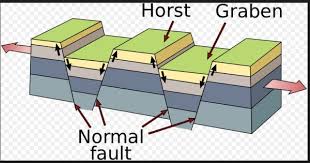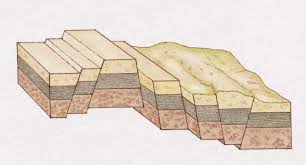Mountain Rwenzori “Mountains of the moon” is the highest BLOCK mountain in Uganda. It’s called mountains of the moon because of its great heights and it was previous called Ruwenzori Range because of the five peaks which makes up the mountain. Such peaks include Mt. Margherita (the highest peak), Mt Stanley and so on. Mountain Rwenzori has a unique formation through faulting process.
Thank you for reading this post, don't forget to subscribe!Fault-block mountains are formed by the movement of large crustal blocks when forces in the Earth’s crust pull it apart. Some parts of the Earth are pushed upward and others collapse down.
To understand a fault-block mountain, or sometimes referred as a “fault mountain”, you need to understand what a fault is. Faults are simply cracks in the Earth’s crust. The surface of the Earth can move along these faults, and displace rock layers on either side. Wherever you have movement along the faults, you can get earthquakes, and over long periods of time mountains form under the intense pressure.
Large blocks of rock along the sides of these faults can be uplifted and tilted sideways by this incredible force. And then, on the opposite sides of the faults, the ground tilts downwards forming a depression. This depression gets filled in and leveled by the erosion of the mountains above.
In summery:
Tension forces pull the blocks in different direct forcing some blocks to collapse while others remain standing to form a block Mountain.

Compression forces also lead to the formation of block mountain. Forces in the earth crust push from different direction towards the centre forcing the middle block of a faulted rock to uplife hence forming a block mountain.

Differential displacement of blocks is another theory leading to the formation of block mountain. After faulting, different blocks start moving independently: some sink while others uplift to form lowlands and uplands respectively.

